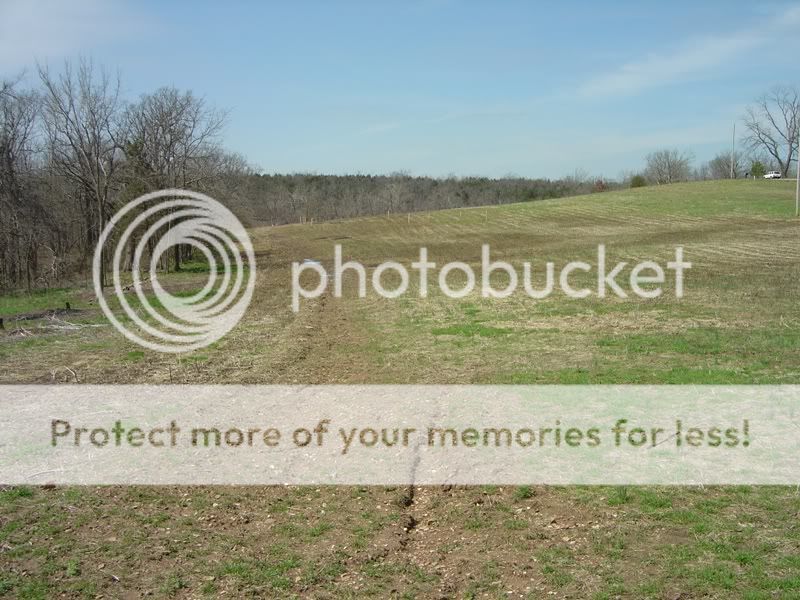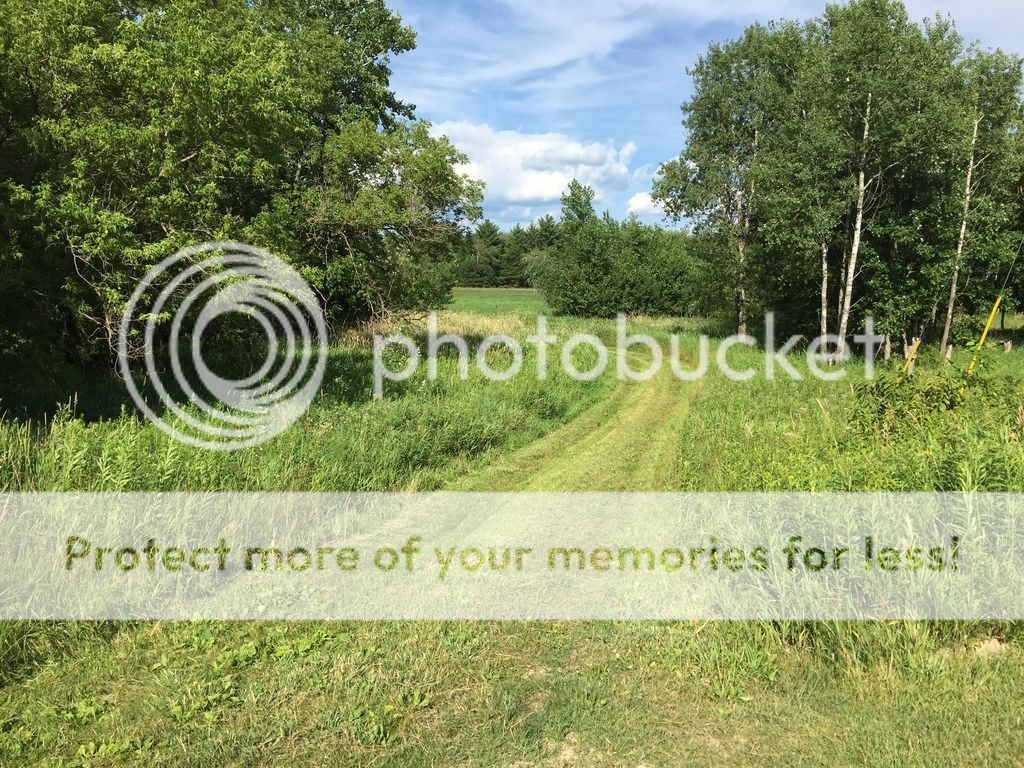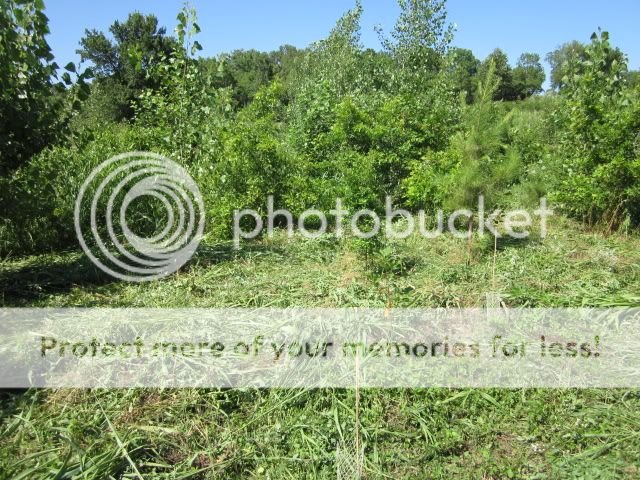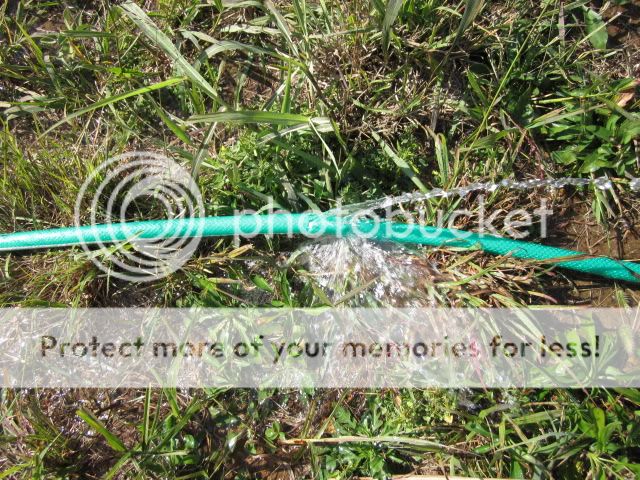There's probably a lot of trappers here, that trap to control predators, even though fur prices are down. Getting skunks from under a house is definitely a reason to trap!!!Great to see another trapper brush! I started back in 1980 with muskrat and mink and ended up being a nuisance trapper part time. It's a lot more fun trapping yotes and cats than getting skunks out from under a house.
You are using an out of date browser. It may not display this or other websites correctly.
You should upgrade or use an alternative browser.
You should upgrade or use an alternative browser.
The Brushpile
- Thread starter Brushpile
- Start date
2008 was my first Spring planting, and I meet a guy named SMSmith, who sent me Red Osier Dogwood cuttings from WI. SMSmith included some Hybrid Poplar cuttings, that I didn't really care about, but I stuck them in the ground anyway, flagged them, and then they were forgotten about. Later that Spring Forage Sorghum was planted in the area, and then later that Summer I saw trees sticking up above the Forage Sorghum, so I walked back to see what they were. They couldn't possibly be the Hybrid Poplar (HP), because they were over 10' tall, but incredibly, there on the base of the trees was my flagging tape!!! Those initial HP were 16 feet tall by the end of Summer, and it occurred to me that I could reforest my pasture in short order. When I posted my success with growing trees and bushes from cuttings a QDMA member used the idea to start a business called "Big Rock Trees".
The following year I discovered that planting HP through black plastic accelerated growth, and I grew the below trees in one growing season. I attempted to measure them, but even with a ladder in my truck bed, couldn't reach the top. So, after the trees were dormant I cut one down to get an accurate measurement and it had over 20 feet of growth from Spring planting to dormancy!

The following year I discovered that planting HP through black plastic accelerated growth, and I grew the below trees in one growing season. I attempted to measure them, but even with a ladder in my truck bed, couldn't reach the top. So, after the trees were dormant I cut one down to get an accurate measurement and it had over 20 feet of growth from Spring planting to dormancy!

Converting an old pasture to deer habitat. Preparation of the land is important, or new plantings will be out competed.
The first step was preparing the land, so land was laid bare. The pasture was fescue with invasive exotics like Johnson Grass, Chinese Elm and unwanted natives, so small trees were cut and treated with Tordon RTU.
The fescue/grass was long and laid over so that spray couldn't penetrate, so it needed to be mowed.
After mowing it was sprayed with glyphosate toward the end of the Summer.
That Fall it was burned.
The following Spring new growth was sprayed with glyphosate again
My first lesson was that gly does NOT leave the soil bare, something in the seed bank will take the place of what gly kills, in my case it was Johnson Grass. So I sprayed the field with gly a third time.
So the field was mowed, sprayed, burned, and sprayed two more times before it was planted. Three smaller fields within the pasture were flagged off and sprayed with Plateau to prep for planting NWSG.
I thought I was starting with a clean slate.
BTW, the mud puddle in the pic is now the pond.

The first step was preparing the land, so land was laid bare. The pasture was fescue with invasive exotics like Johnson Grass, Chinese Elm and unwanted natives, so small trees were cut and treated with Tordon RTU.
The fescue/grass was long and laid over so that spray couldn't penetrate, so it needed to be mowed.
After mowing it was sprayed with glyphosate toward the end of the Summer.
That Fall it was burned.
The following Spring new growth was sprayed with glyphosate again
My first lesson was that gly does NOT leave the soil bare, something in the seed bank will take the place of what gly kills, in my case it was Johnson Grass. So I sprayed the field with gly a third time.
So the field was mowed, sprayed, burned, and sprayed two more times before it was planted. Three smaller fields within the pasture were flagged off and sprayed with Plateau to prep for planting NWSG.
I thought I was starting with a clean slate.
BTW, the mud puddle in the pic is now the pond.

Last edited:
Where Plateau was sprayed stands of NWSG became established. I planted Big Blue Stem, Little Blue Stem, and Indian Grass. Plateau kills Johnson Grass, and if I had it to do over I'd have sprayed everything with Plateau. A nightmare was brewing, and I didn't know it! 2000 bareroot seedlings were planted and they were soon to be enveloped in weeds and grass.
NWSG

NWSG

An neighbor stopped to ask what I was doing, and I told him I was planting trees. The neighbor told me, "I'll tell you what you're going to grow, you'll grow Johnson Grass"!
I took that as a challenge and was determined to prove my neighbor wrong. So I sprayed glyphosate with a back pack sprayer being careful not to damage trees, but damaging trees was inevitable. After each spraying the Johnson Grass came back up, so I sprayed it a gain, and again, but every time it came back up... all Summer long!!! Then I used Poast Plus, which is a grass selective herbicide that could be sprayed over the top of trees, but it only killed grass, and I had weeds I had to cut down with a chain saw!
Clearly spraying wasn't working, so I weed whacked, and weed whacking became a major task, with collateral damage to trees being inevitable. This is the mess I had on my hands!

I took that as a challenge and was determined to prove my neighbor wrong. So I sprayed glyphosate with a back pack sprayer being careful not to damage trees, but damaging trees was inevitable. After each spraying the Johnson Grass came back up, so I sprayed it a gain, and again, but every time it came back up... all Summer long!!! Then I used Poast Plus, which is a grass selective herbicide that could be sprayed over the top of trees, but it only killed grass, and I had weeds I had to cut down with a chain saw!
Clearly spraying wasn't working, so I weed whacked, and weed whacking became a major task, with collateral damage to trees being inevitable. This is the mess I had on my hands!

badgerfowl
Well-Known Member
Your HP cutting success is what motivated me to try them in 2011 to screen part of our field from the road. Only did 25 the first year w/ black plastic. Don't have the growing season as Missouri does but I got 6'+ out of a few of them. The next year I did 400 in plastic and lumite.
Have a nice screen now.
HP are in the middle level on each side of the driveway. I'm guessing tallest is around 30'. Had one of the bigger ones snap off a few weeks ago in a wind storm. Can hardly tell though. I've got pines planted behind them for 10-15 years down the road.

Here's what the right side looked like in 2012.

Have a nice screen now.
HP are in the middle level on each side of the driveway. I'm guessing tallest is around 30'. Had one of the bigger ones snap off a few weeks ago in a wind storm. Can hardly tell though. I've got pines planted behind them for 10-15 years down the road.

Here's what the right side looked like in 2012.

Last edited:
Thanks for

Thanks for posting, I enjoy seeing your success!Your HP cutting success is what motivated me to try them in 2011 to screen part of our field from the road. Only did 25 the first year w/ black plastic. Don't have the growing season as Missouri does but I got 6'+ out of a few of them. The next year I did 400 in plastic and lumite.
Have a nice screen now.
HP are in the middle level on each side of the driveway. I'm guessing tallest is around 30'. Had one of the bigger ones snap off a few weeks ago in a wind storm. Can hardly tell though. I've got pines planted behind them for 10-15 years down the road.
Here's what the right side looked like in 2012.

Brush...I'm tuned in awaiting how you solved the johnson grass issue.
Triple C, one Johnson Grass plant can produce 80,000 seeds and those seeds can remain dormant for 10 years, additionally Johnson Grass grows from rhizomes making Johnson Grass nearly impossible to kill. Many herbicides will produce a top kill, but Johnson Grass will return. Plateau Herbicide kills Johnson Grass and has residual effect, however it would still require repeated applications every 3-4 years and Plateau is for restoring prairie and planting NWSG, so I was afraid to spray it over tree seedlings. I had some Plateau remaining in my sprayer so I sprayed the roadside ditch, and didn't notice any damage to native seedlings, but I still didn't want to risk damaging my seedlings, so I looked for a non-chemical solution.
I was hoping you had the magic cure for keeping JG out of my CP33.I think Plateau would hurt seedlings since it has journey and gly in it.They say this is the reason they quit making journey. I was told you could spray Outrider or Fusilade II on JG that was around shrubs or seedlings but I haven't tried it.These chemicals are so dang expensive.I paid 160.00 for plateau to spray 2 acres
Planting trees was not as simple as planting trees and watching them grow. Weeds and grass needed to be controlled...... then severe drought set in and everything required watering to survive. I used approximately 1200 feet of hose and began watering all day, every day, while I waited for rain that never came.
Each morning I'd turn on the hose and walk the length of it to begin watering and about half the time I'd find this:

Each morning I'd turn on the hose and walk the length of it to begin watering and about half the time I'd find this:





